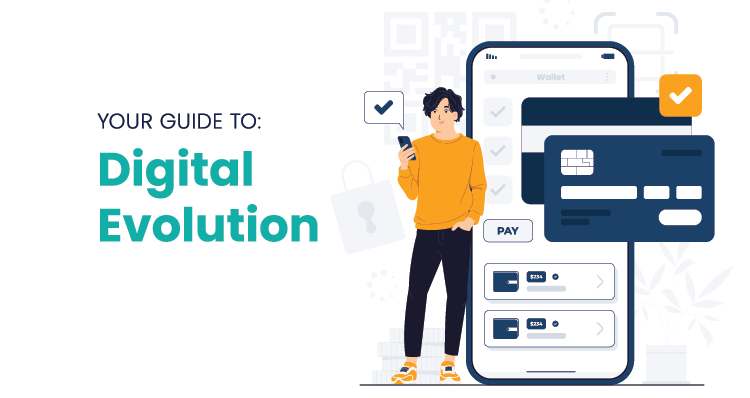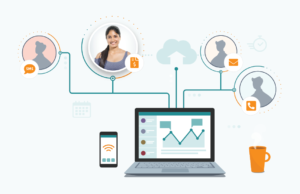At Raxia, we are committed to helping our customers modernize and enhance their patient billing and accounts receivable processes. A major goal is to reduce or eliminate the need for costly paper statements by transitioning to digital billing solutions. While the shift to digital patient billing offers numerous benefits, it’s important to transition carefully to ensure high patient acceptance and effective communication.
This guide provides best practices for transitioning from paper to digital patient outreach, helping you assess your readiness and achieve better results with a digital-first and digital-only approach.
Evaluating Digital Contact Information
Successful digital outreach begins with accurate and complete digital contact information. To maximize engagement, it’s essential to ensure that nearly 100% of your patients’ mobile and email addresses are collected.
To assess the quality of your digital contact information:
- Utilize the Contact Information report available in the YourHealthBill (YHB) Patient Payment Manager (PPM). This report identifies gaps in contact information that could hinder effective communication and payment collection.
Strategies for Collecting Digital Contact Information
- During Patient Registration: Integrate the collection of digital contact information into the patient registration and check-in processes. Use forms that prompt patients to enter their email addresses and mobile numbers as part of their essential contact information.
- Verbal Reminders from Staff: Train staff to ask patients to confirm or update their contact details during every interaction, whether it’s at check-in, during the appointment, or at check-out.
- Signage and Flyers: Place signs in the waiting area and examination rooms, and include flyers reminding patients to update their contact details. Raxia will provide materials clearly stating the benefits of receiving communications digitally.
If the existing quantity and quality of patient digital contact information are insufficient, we recommend initiating your billing outreach with traditional mailed statements first, sending billing reminders digitally after the first statement. Subsequently, as you implement efforts to enhance and update contact details, transition towards digital-first or digital-only communications. This staged approach ensures continuous engagement while gradually moving patients towards more efficient digital interactions.
Promote and Educate Patients About Digital Billing
Educating patients about digital billing communications is critical:
- Inform patients during their visit or through initial paperwork that they will receive digital communications regarding their bills. This reduces surprises and increases comfort with digital interactions.
- Highlight the benefits of digital billing, such as environmental savings and convenience, to improve patient engagement.
- Enhance patient trust by linking directly to the YourHealthBill payment site from your practice’s website. This helps patients recognize emails and text messages from YHB as legitimate and trustworthy.
Raxia provides informational materials to support the education process before starting a digital-first or digital-only campaign. Clear communication about the electronic receipt of bills sets proper expectations and facilitates smoother billing interactions.
Understanding Practice Types and Patient Relationships
Some medical specialties may find it particularly challenging to ensure that patients recognize and respond to their medical bills and digital communications. This issue often arises in fields where there is less direct or personal interaction with patients, making it harder for patients to associate the communication with the care they received. Examples of such specialties include:
- Anesthesiology: Patients may not meet their anesthesiologist until the day of surgery, often briefly before anesthesia is administered, which can make it difficult for patients to recall the provider later when receiving a bill.
- Hospitalists in Contracted Facilities: Hospitalists typically manage patients’ care during hospital stays but do not have an ongoing relationship with them, which can lead to confusion when patients receive billing communications from these providers.
- Diagnostic Labs: Patients often visit diagnostic labs only for specific tests and may not see these labs as directly connected to their primary care or specialist doctors, complicating recognition of related communications.
- Radiology Departments: Similar to diagnostic labs, interactions with radiology are often brief and clinical, with little to no follow-up, leading to lower patient recognition.
For these providers, it may be beneficial to employ a two-pronged approach to billing communications.
- Starting with paper statements can help establish a tangible connection between the service provided and the billing entity. These initial communications will clearly state the nature of the services rendered and the provider’s identity to reinforce recognition.
- Following up with digital communications not only provides continuity but also introduces convenience and efficiency once the initial recognition is established. This strategy helps bridge the gap in patient-provider interaction, ensuring that patients are more likely to recognize and respond to subsequent digital communications.
What Does Raxia Do to Improve Digital Communication Tactics?
With the foundation of robust digital contact information in place, the next crucial step involves enhancing the effectiveness of our communication. Raxia employs a multifaceted approach to ensure high engagement and trust with our digital billing communications. By refining how we connect with patients, we aim to improve their overall experience and response rates. In addition to our AI-powered outreach platform, here are several key strategies we implement:
- Clear Identification: We ensure the healthcare provider is clearly identified and immediately recognizable to the patient.
- Consistent Communication: Using consistent email addresses, phone numbers, and messaging formats helps build familiarity and trust.
- Personalization: We ensure our messages are timely and relevant by tailoring them to each patient’s preferences and their likelihood to engage.
- Clear Language: We use straightforward and professional language, avoiding marketing jargon or sensational content.
- Message Design: We strategically design and rigorously test various message formats to boost click-through rates, logins, and payment activities.
- Branding Consistency: All communications are branded to match the healthcare provider’s logo and colors, consistent with other patient interactions.
- Link Safety: We utilize secure links that are specific to each patient’s email address or mobile phone.
- Security Features: We adhere to HIPAA, PCI, TCPA, and CAN-SPAM regulations, maintaining the highest level of data security and patient privacy.
- Customer Support Details: We provide easily accessible contact information for the practice or billing company on all platforms.
- Feedback Mechanism: We encourage and utilize patient feedback to continuously refine our communication strategies.
- FAQs to Enhance Understanding and Trust: By providing a comprehensive FAQ section on digital billing and communications, we address common patient concerns and questions upfront.
Conclusion
Transitioning to digital patient billing is a significant step forward in the efficiency and sustainability of healthcare RCM services. By following these best practices, healthcare providers and revenue cycle management companies can enhance patient engagement, streamline billing processes, and maintain high levels of trust and security.



